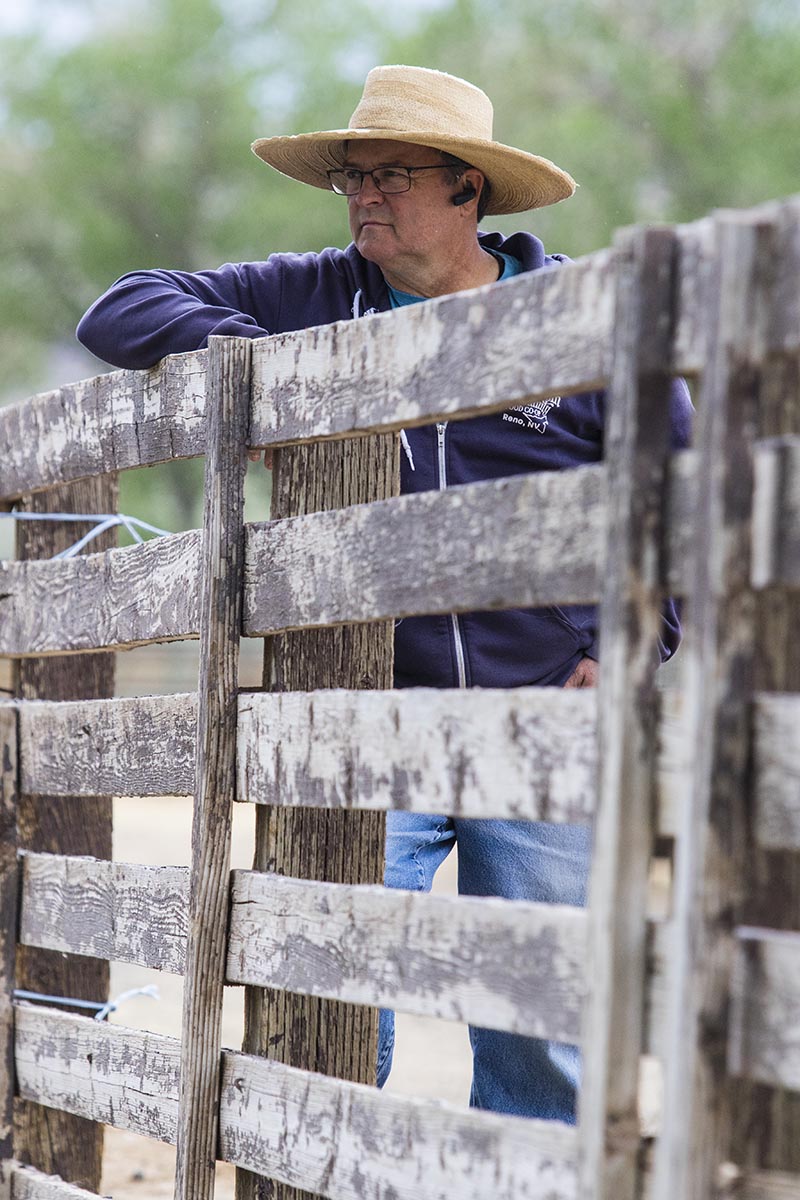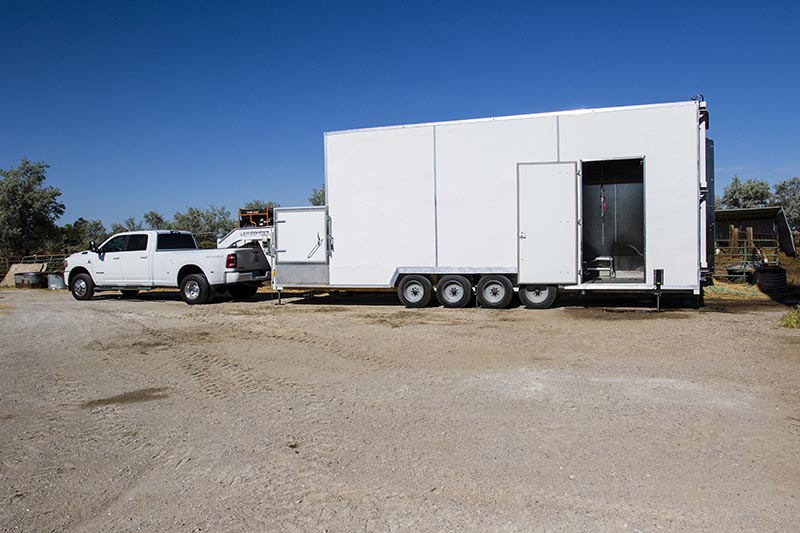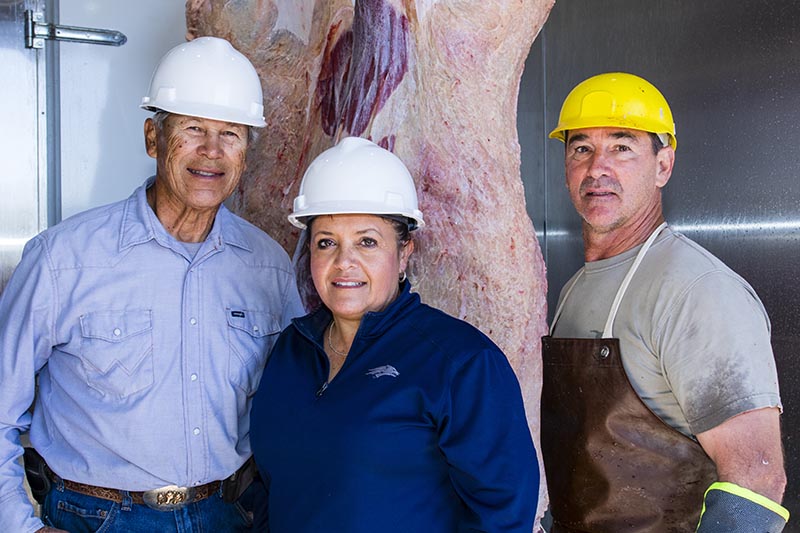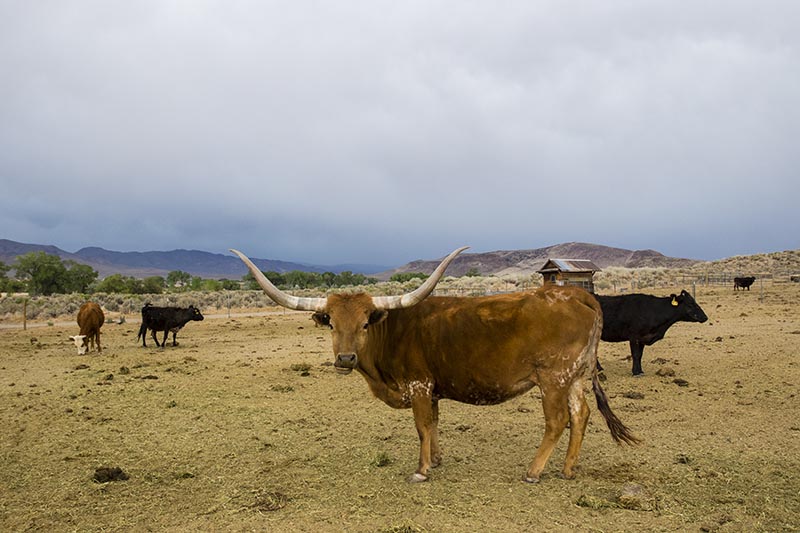Local meat-processing industry struggles to meet pandemic-driven demand.
“Pssst. Hey, buddy. Want to buy some meat?”
Let’s hope consumers are never faced with having to buy bootlegged meat products. But when faced with a lack of meat-processing plants certified by the U.S. Department of Agriculture, in a state in which livestock is its No. 1 agricultural industry, it might not be that far-fetched.
Thankfully, reputable local ranchers care too much about their end consumer product to let that happen, and the Nevada livestock industry is trying to address the bottleneck in meat processing it currently faces.
During the pandemic, as restaurants shuttered, many people became eco-conscious home chefs, increasing demand for locally raised meats. However, despite beef-cattle ranching and farming being a $377 million industry for Nevada in 2015, according to the Nevada Department of Agriculture, USDA-certified meat-processing plants were scarce. And meat must be USDA certified before reaching the consumer commercially (through middleman businesses such as restaurants and retail stores; rules for ranchers selling directly to residential customers are different).
According to the USDA, “Only inspected and passed meat and meat food products (those bearing a mark of inspection) may be used in the preparation of products sold (including meals) at retail stores or restaurants … The Federal Meat Inspection Act (FMIA) requires that all meat sold commercially be inspected and passed to ensure that it is safe, wholesome, and properly labeled. The USDA Food Safety and Inspection Service (FSIS) is responsible for providing this inspection.”
Nevada is comprised of more than 70 million acres of land. According to the U.S. Bureau of Land Management, Nevada boasts the “most public land for [livestock] grazing … about 43 million acres.”
A challenge for the Nevada livestock industry is that many small ranchers are based in rural Nevada, and traveling the lengthy distances required to get their animals slaughtered and processed at a USDA-certified facility can easily eat up their profit margins.
During the pandemic, processing facilities also had to meet new health and safety requirements, such as installing Plexiglass and keeping workers six feet apart.
These new demands had an impact on processors’ efficiency, creating additional delays in getting their work done.
The Bottleneck
Ranchers such as Rob Holley of Holley Family Farms also faced a conundrum during the COVID pandemic: Demand for his meats had increased as restaurants closed, but meat-processing facilities were inundated with ranchers needing to turn their livestock into meat they could sell.
Raising cattle isn’t an easily achieved, overnight endeavor. It takes up to three years for cows to grow from conception to the marketplace. On top of that, Northern Nevada’s climate affects the grazing of cattle in ways other states don’t experience.
As opposed to California, for example, seasonal climate changes — such as deep freezes and heavy snowfall — in Nevada’s northern regions limit grazing opportunities. Drought also adversely affects the amount of grass cattle can graze on. More precipitation means more grass, which equals more ability to increase livestock numbers on a given amount of acreage, Holley says.

“The increase in demand and support of local agricultural ventures is exciting. We just need to figure out how to meet that challenge and meet the customers’ needs,” Holley explains. “But the positive thing is the increase for sure.”
Supply is sufficient. That’s not the current problem.
The issue is that full-service, USDA-certified meat-processing plants are few in number, and not just in Nevada. Full-service is defined by Tom Barnes, president of the Nevada Cattlemen’s Association, as a facility that can get cattle from hoof to package.
Officially, a livestock processor must have a kill facility, a USDA-inspected kill floor, a cut-and-wrap facility, and the ability to give the finished product a USDA stamp for resale.
Wolf Pack Meats, run by the University of Nevada, Reno, is one of only a few full-service, certified facilities where ranchers can take their cattle for slaughter in Northern Nevada. Lahontan Valley Meat Packing Co., a Fallon-based family business since 1963, is another, which now offers full-service processing in two locations.
Fallon Livestock Processing LLC, also has recently hopped into the USDA-certified realm, absorbing longstanding Mori Wholesale Meats’ facility into its new Nevada operations. Richard McCartney, co-owner of FLP, got into the business because of the need for it, he says. After opening in early 2021, the plant already is fully booked out for processing three to four months in advance.
An Innovative Solution
Given the dilemma, the UNR College of Agriculture, Biotechnology & Natural Resources stepped in to help rural ranchers suffering a lack of local processing facilities.
Staci Emm, UNR extension educator for the Mineral County Cooperative Extension, spearheaded the buildout of a new mobile slaughter unit specially crafted to achieve USDA certification. She acquired the substantial funds needed to create the portable facility from a UNR grant she applied for under the Nevada Department of Agriculture’s Inventory and Distribution System for Nevada Agriculture Produce and Products.

Emm and her team brought in specialists, including Charles Mori, a longtime local butcher, along with a meat scientist with the USDA to ensure the unit was built with ranchers and USDA certification in mind.

Meat producers also are heavily involved in the process, excited about the ease it will now afford them in getting their products to consumers. The unit also will be used for educational purposes, in conjunction with the Nevada Department of Wildlife, providing wildlife slaughter training.
It is scheduled to begin operations and its journey to rural areas of the state this summer, beginning in Yerington.
The Nevada Cattlemen’s Association’s Barnes, a fifth-generation Nevada rancher and head of his family operation, which has been in Jiggs, Nev., since 1948, explains that ranching is no easy task; it’s a seven-day-a-week, 365-day-a-year enterprise.
With transportation, feed, and processing costs, just to name a few expenses, profit margins are easily eaten up in this industry that frequently requires ranchers to run a high volume for it to be financially feasible for them.
It was devastating for ranchers to lose the hotel and restaurant trade as customers during the pandemic, Barnes says. Some adjusted their business models, shifting to online sales, which snowballed so quickly they had a hard time keeping up with demand.
He believes the mobile unit is a positive step, especially for more niche ranches that don’t produce large volumes of cattle. Nevada boasts myriad small ranches, most of them family-owned and run.
However, larger ranches can have 150 to 200 heads of cattle, and getting them to market with the current bottleneck in the processing chain is a huge challenge. More processing capacity is desperately needed to meet consumers’ increasing demands.
And the industry is slowly growing to accommodate these demands. But processing remains a challenge.
Emm says encouragingly, “In all the years I’ve worked in this [industry], there have been so many [more] successes in the last few months.”
Additionally, to help engage younger generations in ranching and agriculture, UNR has launched a new graduate program in animal and rangeland science through the College of Agriculture, Biotechnology & Natural Resources.
The university recently received accreditation from the Society for Range Management, and the new program will “provide training and learning opportunities to students interested in the research, ecology, and management of rangelands and the animals, both wild and domestic, that use them,” says Barry Perryman, interim chair for the department.
Ultimately, the motivation for many ranchers to continue in this challenging industry is their families.
As Barnes explains, ranching is about feeding families, instilling the value of hard work and appreciation of agriculture, and taking care of each other. Families employ other families, so the positivity trickles down.
He has faith in the industry, despite the backlog in processing. Supply will eventually catch up to demand, as people continue to shop small and local. People such as Emm are instrumental in the effort.
“When you’re supporting Nevada beef and Nevada ranches, it’s about supporting families. We need to be sustainable. When you look at these family ranches, we’re doing it for the right reasons because we’re passionate about the land and livestock and we’re passionate about our families. We want to raise our families to have a good healthy work ethic and be good productive citizens,” Barnes says. “And in the process, we’re helping to feed a nation.”
Natasha Bourlin is a native Nevadan, freelance writer, and local-meat lover.


